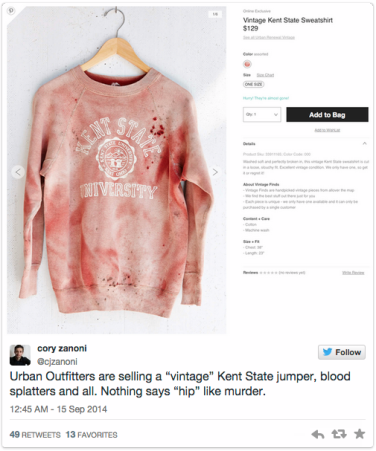In the glorious decades of the 70s, 80s, and 90s, 30-second TV commercials were at its peak and it would be almost cruel, like benching the music of Mozart for some mere Broadway Jazz, to put the 30-second spot on death row. The 30-second spot was more than the founder and CEO of advertising; it was the King. Today, it remains the “standard unit” of consumption, and is the backbone of reminder advertising. However, shifting into the Digital Era has changed the face of advertising and the 30-second spot does not hold its prime level of recognition as it once did. The initial objective of advertising that was to showcase basic product promotions has evolved to memorable cinematic masterpieces, which do not interrupt but rather earn and respect consumers’ attention. Hence, a time constraint is not applicable in such a grand transformation. Nevertheless, confining a 30-second spot to death row is nonsensical. Whether it is 5 seconds or 6 minutes, the length of the ad becomes trivial in such an era where the essence is the story.
In the Digital Era, we may fall victim to a virtual reality where a “Big Brother” scenario has enslaved us to such crippled interactions; however, as a growing human race living in a society where change is happening as I am typing this, we have demonstrated an extraordinary ability to evolve and adapt. The Internet was once thought to be TV’s biggest enemy, but as a medium, TV has evolved to accommodate these changes and remains one of the most dominant forms of advertising today. With its “fifth consecutive year of growth, the sector is on track to exceed £5 billion for the first time”. Moreover, “double screening” has become a trend, which involves an interaction with the TV followed by a reaction posted on social media or the Internet. An example to parallel this idea would be the United States annual Super Bowl.
The Super Bowl celebrates its 30-second spots more than the act of the game itself. The spot primarily serves as a reminder to individuals of a brand/product and as a result, boosts awareness immediately online. 30-second spots taken by brands such as Doritos effectively manage to deliver a story naturally, light-heartedly and gracefully. Essentially, a 30-second spot here proves to be a trusted medium that can deliver a story and a brand reminder simultaneously, and that too, to a mass audience of perhaps 100 million consumers. Recently, however, some leading ad industry pundits such as Trevor Beattie questions the 30-second spot and labels it as “tired” and “old fashioned”.
Trevor Beattie, a man whose career is defined by two billboard campaigns (Wonderbra and FCUK), claims the 30-second spot is “too long and bullshit”. He further supports his claim when he continues: “We live in a tapas existence…everything is bite size”. Although he attacks the length of the 30-second spot, his panoramic vision is such that we must condense adverts to 5-second spots to fit into our digital lives. He continues to kindly serve us dollops of his wisdom on a silver platter with his prophecy – ad breaks will soon consist of a range of 2 to 3 minute commercials and a flood of 5-second commercials. Kudos to Beattie for voicing his opinion so confidently, but a revision is needed to accommodate for other trends in the industry. The act of storytelling has become a monument for sentimentality with which such consumers are now captivated to watch adverts for as long as 6 minutes.
Johnnie Walker’s “The Man Who Walked Around the World” starring the charming Robert Carlyle was a 6-minute short film. Many differentiate this advert not simply because it was 6 minutes, but rather because it was filmed in a single, continuous shot.
Although the only involvement was done by a single character throughout the film (minus the Scottish individual playing the bagpipes in the beginning), and there was initially the thought of a lackluster recall of a brand’s history; this advert manages to cleverly deliver 200 years’ worth of Johnnie Walker with the careful placement of certain objects, impeccable timing and an engaging monologue by Carlyle. As someone viewing this advert, I do not feel conned into a sales promotion nor do I feel like I am an outsider watching an interaction. I am physically a part of the interaction while Carlyle delivers his monologue. This almost triggers a high in your mind because you feel a sense of empowerment and importance. This advert was highly effective because of its creative freedom and cinematic appeal in the delivery and execution of the historic recall. Most importantly, it told us a story.
Without a story, the product is on death row. Surprisingly, or not, all individuals are motivated by a story that begins with “Once Upon A Time”. (Or in the above example, “Shut it”) We are human beings who seek escape and fantasy, wishing a sense of connection and familiarity with those on screen. When a connection is established and we become immersed in in a story, “…we drop our intellectual guard. We are moved emotionally and this seems to leave us defenseless”. A story is the ultimate weapon, especially in resonating with the hearts of the consumers. Therefore, a question for Beattie: is 5 seconds able to tell a story?
Today, fast-forwarding and recording have become somewhat of a norm, and even setback television as a medium. Technology has provided us with an escape from television, and acted as an agent of justification for our virtual lives. As a result, advertisers have had to evolve to meet the needs of Generation Y, especially Generation Z. Beattie uses this evolutionary change in human behavior to justify his statement to “embrace impatience” amongst the Generation Z. However, we must question if a consumer will physically purchase a product after a 5 second advert. After all, the purpose of marketing is to persuade and sell the product. Regardless of the length of the advert, the “annoyance factor” is evident when an advert interrupts rather than engages us. Imagine a 5-second advert that begins with a loud bang and an image startles you as it jumps out of the screen towards you. It is closely followed by the product name or brand and then, the screen goes black. A 5-second advert is equally as likely to roll you up into a frothy ball of uncontrollable rage as a 2-minute advert could do. Therefore, as technology has matured, advertising has evolved and embraced the act of storytelling to engage, respect and persuade consumers to purchase their products.
For that reason, time is not the most important factor. All brands are unique in their own aspect and hence, suited to different lengths, styles and executions in delivering a message. A 30-second spot successfully conveyed a story for the Doritos brand in the Super bowl 2015, and a 6-minute short film managed to execute 200 years of Johnnie Walker history. The length of the ad becomes irrelevant as noted in the popular 2007 Cadbury gorilla advert whereby “in the space of a fortnight, 58,000 households took time out of their busy days to watch a long-form version of the ad”. Although time is not of the essence in advertising, the 30-second spot does not receive as much attention as it once did.
In light of today’s Digital era, social media advertising has triumphed the 30-second spot on traditional TV. Companies wish for their adverts to be liked and shared across social media websites, and most of all, to ‘break the internet’. In other words, virality is a dream advertising agencies and companies hope to see as a result of effective storytelling. Scientific and academic research suggests that the more emotion an advert elicits, the more shares it will receive. Therefore, social media advertising has become a primary method to deliver a story and receive ‘virality’ for it. The 30-second spot may be able to deliver a story, but its spot tends to be used as a reminder of a brand rather than introduce a new product.
The Global Ads Chart on Mashable lists the top 10 viral ads including the Evian “Baby & Me” commercial, which received over 3 million shares online. Most notably, the average length of these videos was 4 minutes and 11 seconds long. If you zoom out and look at the top 50 ads, a pattern can be observed whereby the shorter the ad, the fewer the shares. For example, “the average length of the 11th to 20th most shared ads of all time is 2 minutes 30 seconds…” and the average length of the 41st to 50th ads is “1 minute 45 seconds”. All of which are over 30 seconds, denoting that the 30-second spot has taken a backseat in advertising.
If the 30-second spot hopes to stay relevant, the challenge is truly left to the television producers. Since television is the most cost effective medium, and is able to guarantee the largest possible reach towards a company’s target market, producers must be innovative and creative when creating content. Advertisers need to become adept in breaking through clutter, especially with social media advertising becoming increasingly ubiquitous. Regardless of the current trends leaning towards social media advertising and lengthier adverts though, television remains a dominant medium. The 30-second spot has not finished its run yet.
Go to bed now,
Mo




